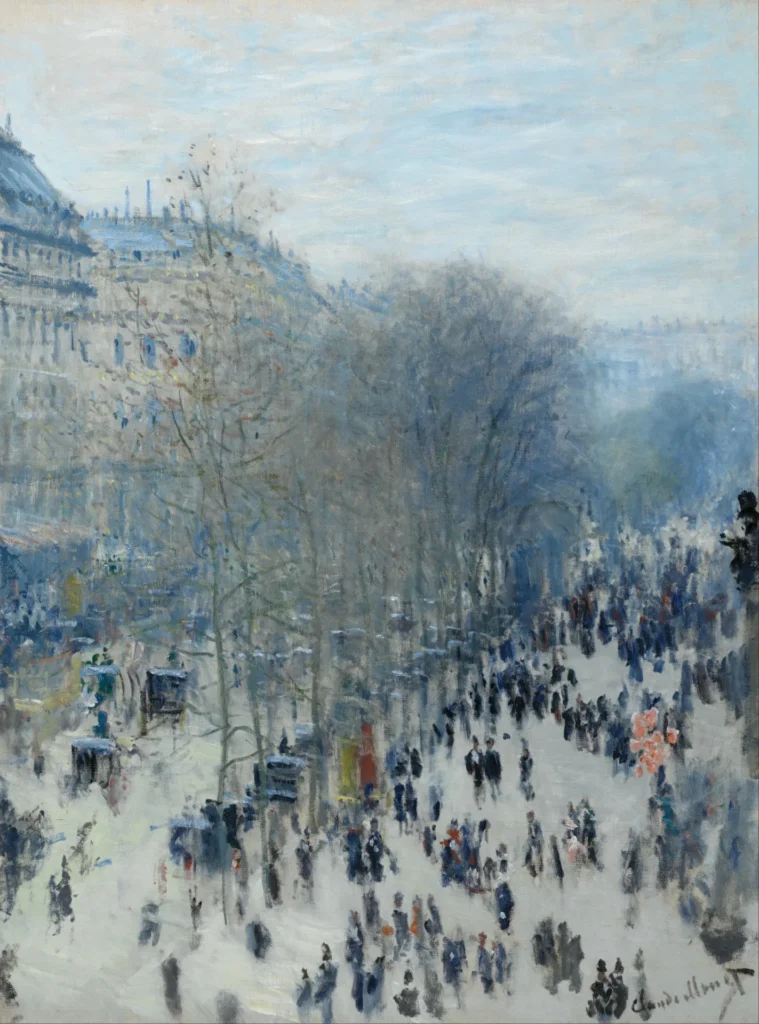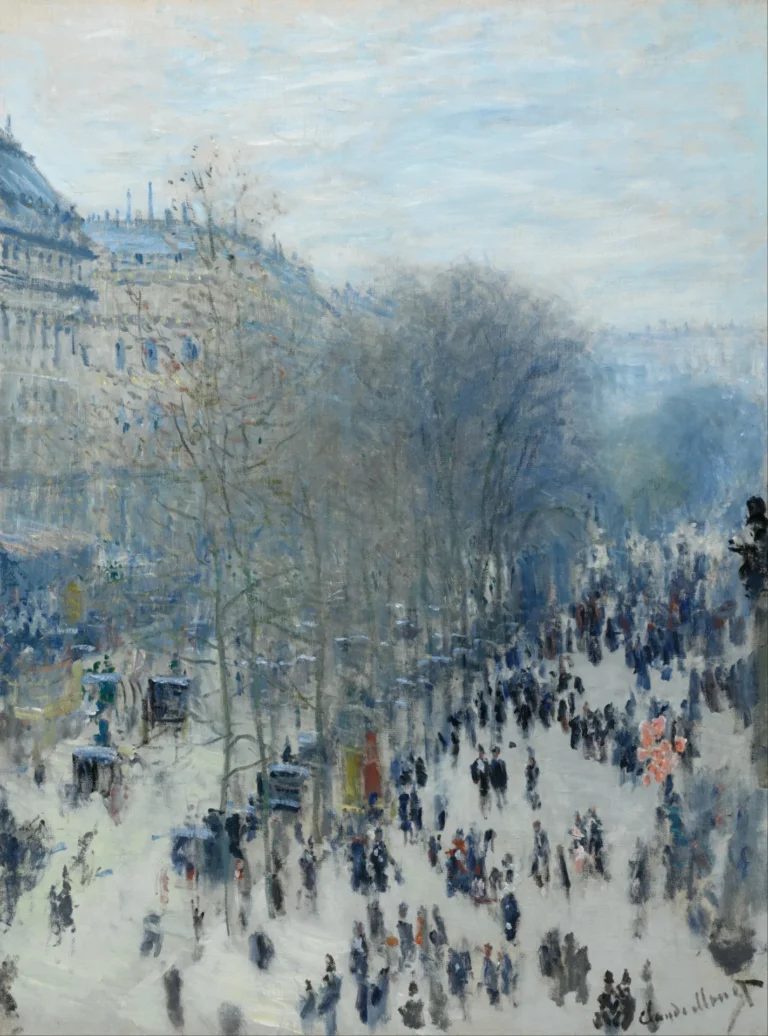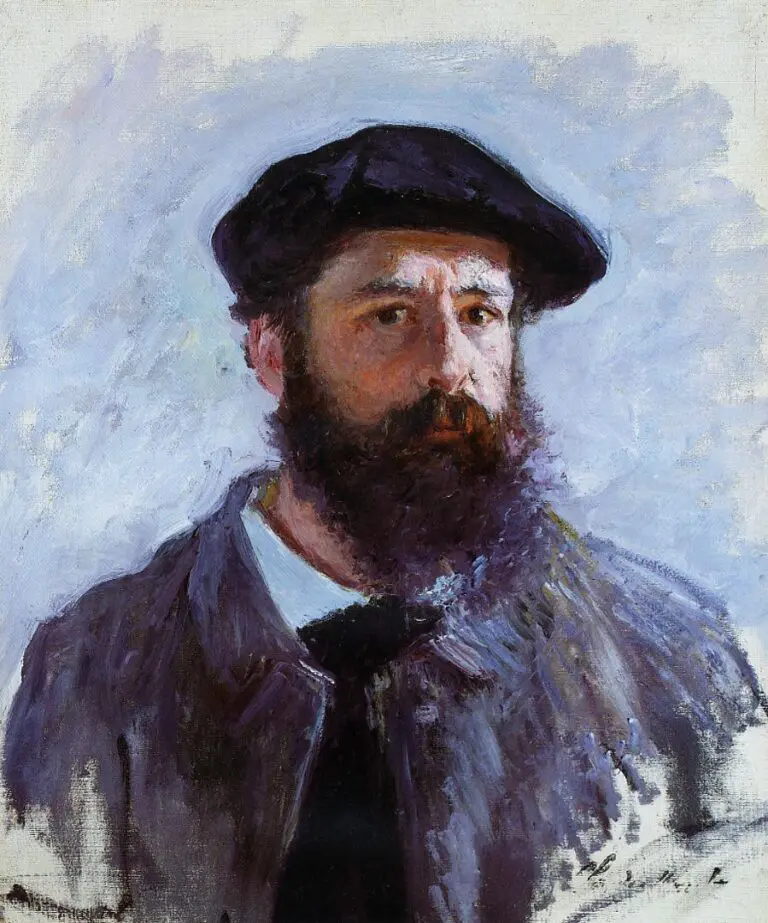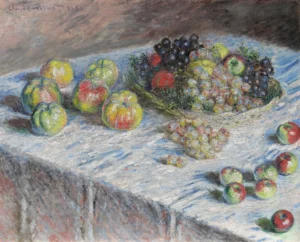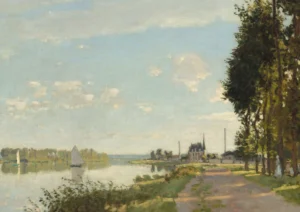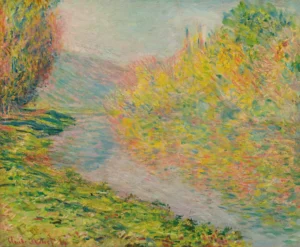Boulevard des Capucines
Created between 1873 and 1874, Boulevard des Capucines captures the lively street scene of Paris from an elevated perspective at Nadar's studio. Monet employs rapid brushstrokes and vibrant hues to convey the energy of city life, reflecting the burgeoning Impressionist style. This painting was pivotal in showcasing the movement's break from traditional artistic conventions, as seen in its display at the inaugural Impressionist Exhibition in 1874.
1873-1874
About the Artwork
The journey of Boulevard des Capucines begins in the heart of Paris, where Monet found inspiration from the bustling movement of city life. Painting from the balconies of 35 Boulevard des Capucines, he sought to encapsulate the vibrancy of a modern urban landscape. The artwork became emblematic of the Impressionist movement, which arose in reaction to the constraints of the Académie des Beaux-Arts. Monet's playful brushstrokes and intentional blurriness emphasized the fleeting nature of life, showcasing his ability to capture movement while simultaneously evoking emotion. The work was displayed at the first Impressionist Exhibition in 1874, garnering both praise and criticism, thus sparking discussions that would ultimately shape the future of art.
Did You Know
Liked what you see? Add it to your collection.
Enjoyed reading? Share it.
... continued
Location and Perspective
Monet painted this scene from the upper-level balconies of the building at 35 Boulevard des Capucines, which was the studio of the photographer Félix Nadar. This vantage point allowed him to capture the bustling street life of Paris from a unique and elevated perspective.
Composition and Technique
The painting features short, quick brushstrokes and minimal detail, characteristic of Monet's Impressionist style. This technique creates the "impression" of people and vehicles in motion, capturing the dynamic and fragmented nature of modern urban life. The use of blue shadows and bold brushstrokes adds to the sense of movement and energy.
Criticism and Reception
Boulevard des Capucines was exhibited at the First Impressionist Exhibition in April 1874, although there is some debate over whether the version now at the Nelson-Atkins Museum of Art in Kansas City or the one at the Pushkin Museum in Moscow was the one displayed. Critics at the time, such as Ernest Chesneau and Ernest d’Hervilly, praised Monet's ability to capture the movement and vibrancy of Parisian life, despite some criticism about the abstracted and blurred depiction of figures, which one critic described as "black tongue-lickings."
Historical Context
The painting is part of a broader movement by Monet and other artists who were rejected by the conservative Académie des Beaux-Arts. In response, they formed the Société anonyme des artistes peintres, sculpteurs et graveurs and held their own exhibitions, marking the beginning of the Impressionist movement.
Versions
There are two versions of Boulevard des Capucines. one at the Nelson-Atkins Museum of Art in Kansas City and the other at the Pushkin Museum in Moscow. The exact order of their execution and which one was exhibited in 1874 remains a subject of scholarly debate.
Details and Setting
The painting depicts a winter scene on one of Paris's "Grand Boulevards," showing the hustle and bustle of the street, including trees, carriages, and pedestrians. The boulevard itself was part of Napoleon III's urban renewal project, designed by Baron Georges-Eugène Haussmann.




